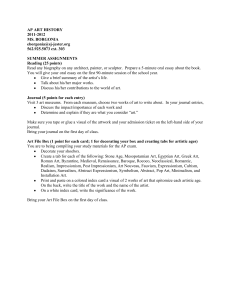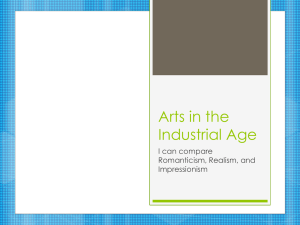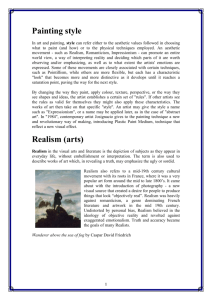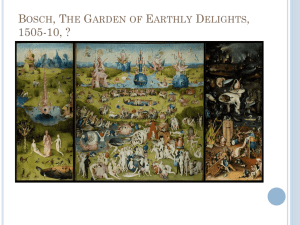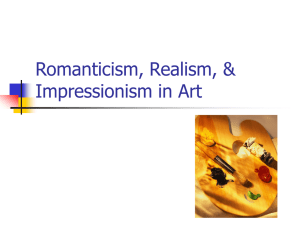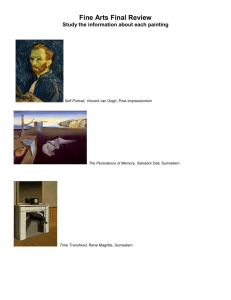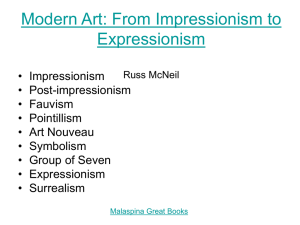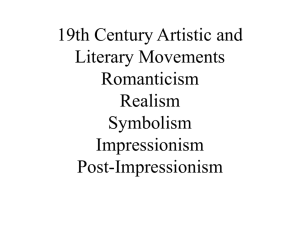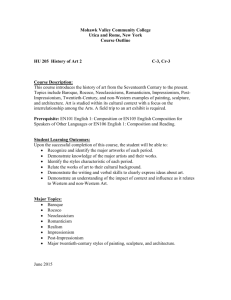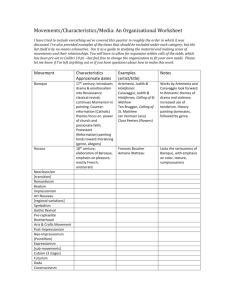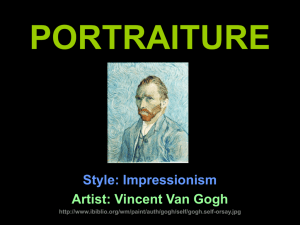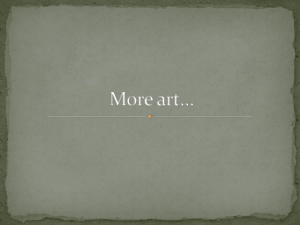Art Periods in Modern European History
advertisement
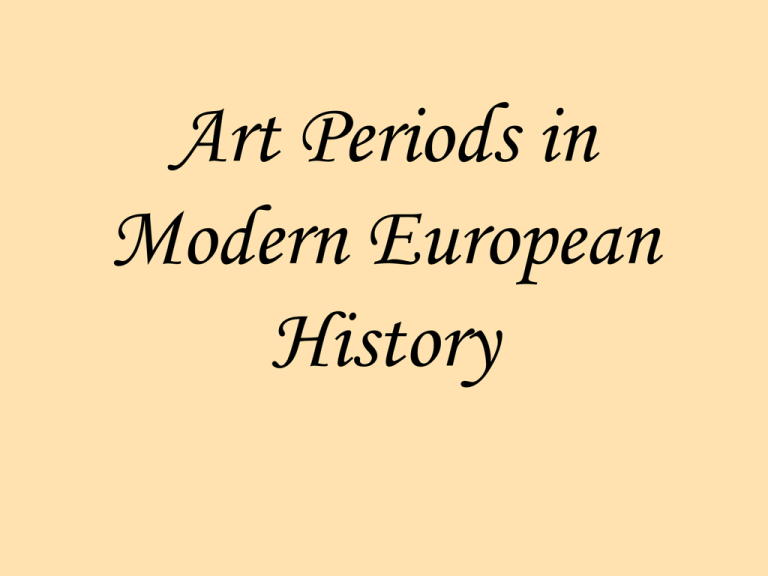
Art Periods in Modern European History Renaissance • Based on rationality, admiration of classicism, a secular approach to the world. • Innovations include oil paint, use of point perspective, shading, use of an outside source of light. Mannerism • More subjective and emotional. • Mannerism reflects the troubled time of the reformation vs. Catholic counter reformation • Abandonment of perspective, or very elongated exaggerated limbs, dark shadows. • El Greco, Titian, late Michelangelo. Baroque • • • • More realistic than mannerism. Grand, elaborate, formal, and emotional. Tied to grandeur of the church or monarchs. Rubens, Velazquez, Bach, Handel, Opera, Milton, late Shakespeare, Cervantes. Rococo • Elaborate but lighter, almost dainty. • Mainly the 1700s. • Watteau, Fragonard • Great patron was Louis XV’s mistress, Madame de Pompadour. Realism • Netherlands • Fans Hals, Jan Vermeer, Rembrandt. • Still life, everyday scenes, spiritual side of life reflected in faces. Neoclassicism • • • • Late 1700s. Tied to the Enlightenment. Use of the arch, simple forms.. Paintings: Statuesque, simple, balanced, clear, less emotion. Romanticism • Objections to the Enlightenment’s emphasis on reason, form, and the classics. • Themes of nature, simple life. • Gothic images or exotic images. • Music: ballads, folk songs • Writers: Keats, Shelley, Lord Byron. Realism • Romanticism considered too sentimental. • Later 1800s. • Art intended to push for social reform– realistic depiction of life and its problems. • Gustave, Courbet, Daumier, Millet. • Literature: Balzac, Flaubert, Dickens. Naturalism • Mid 18th century literary movement. • Scientific description of nature and the mind. • Zola, Stephen Crane, Ibsen. Symbolism • Literary movement that suggested rather than named. • Mallamè Impressionism • Pleasant scenes rather than social comment, abandon line, perspective, and studio light. • Attempt to capture a fleeting moment in time. • Monet, Degas, Renoir. Post-Impressionism • Turning away from impressionism because it lacked form and discipline. • This movement was only united in rejecting impressionism. • Expressed chaos and complexity of the machine age. • Importance of line. • Beginnings of the modern art movement. • Cezanne, Seurat, Gaugin, Van Gogh, Toulouse-Latrec. Cubism • Use of shape to suggest reality. • Movement toward abstraction. • Picasso, Braque. Expressionism • Use of strong color and line to show emotion and lack of order in the human mind. • Influence of African masks and images (and influence of Imperialism) • Matisse, Munch, Van Gogh. Abstract expressionism • Purely abstract, emotionally associative design of shapes and colors. • Kandinsky, New York school. • Reflection of modern times—post World War I Surrealism • Psychological paintings, sometimes very realistic, that reveal the inner mind. • Dali, Klee, Miro, Chagall. • Again, reflection of Freudian concepts and the scars that World War I and II have on the world psyche.
